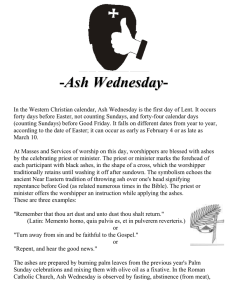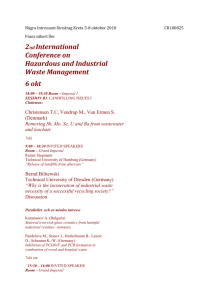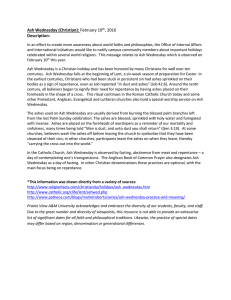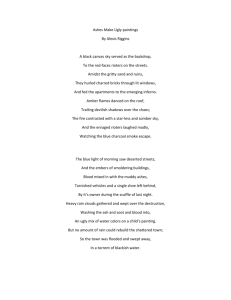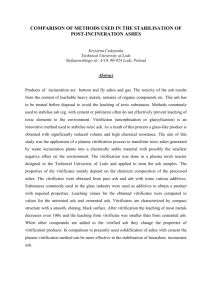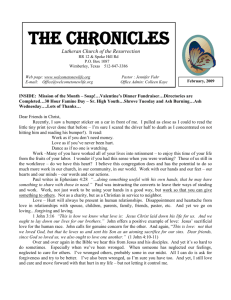World Health Organization Department of Emergency and
advertisement
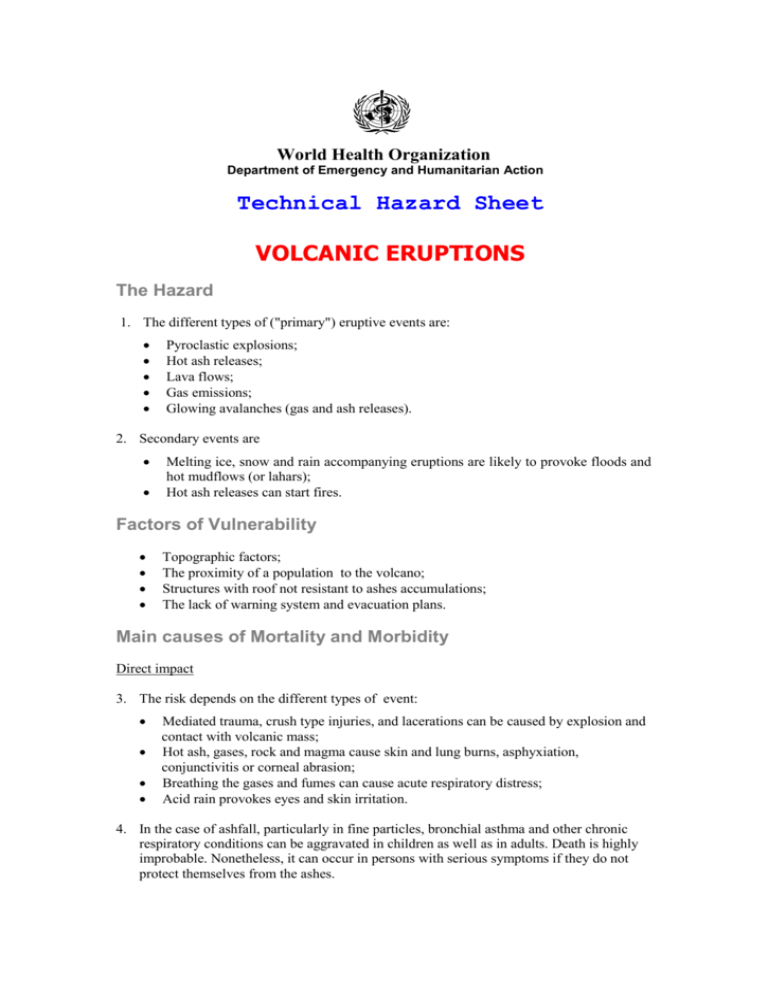
World Health Organization Department of Emergency and Humanitarian Action Technical Hazard Sheet VOLCANIC ERUPTIONS The Hazard 1. The different types of ("primary") eruptive events are: Pyroclastic explosions; Hot ash releases; Lava flows; Gas emissions; Glowing avalanches (gas and ash releases). 2. Secondary events are Melting ice, snow and rain accompanying eruptions are likely to provoke floods and hot mudflows (or lahars); Hot ash releases can start fires. Factors of Vulnerability Topographic factors; The proximity of a population to the volcano; Structures with roof not resistant to ashes accumulations; The lack of warning system and evacuation plans. Main causes of Mortality and Morbidity Direct impact 3. The risk depends on the different types of event: Mediated trauma, crush type injuries, and lacerations can be caused by explosion and contact with volcanic mass; Hot ash, gases, rock and magma cause skin and lung burns, asphyxiation, conjunctivitis or corneal abrasion; Breathing the gases and fumes can cause acute respiratory distress; Acid rain provokes eyes and skin irritation. 4. In the case of ashfall, particularly in fine particles, bronchial asthma and other chronic respiratory conditions can be aggravated in children as well as in adults. Death is highly improbable. Nonetheless, it can occur in persons with serious symptoms if they do not protect themselves from the ashes. Indirect Impact 5. Ashes can have toxic consequences (i.e. gastrointestinal problem) due to ingestion of contaminated food or water. 6. Ashes can have mechanical consequences. The weight of ash may cause collapse of building (i.e. trauma). 7. Damage on health infrastructures and water systems can be severe. Problem of communication (ashes create serious interference) and transportation (poor visibility and slippery roads) are likely to happen. Foreseeable Needs 8. Pending an assessment, needs can be anticipated such as: search and rescue, medical assistance, managing population displacement in the short-term, reducing the risk for vulnerable groups of being exposed to ashes, raising awareness on the risk associated with ashes (health and mechanical risk) and maintaining food security conditions over the long term (lava, ashes and acid rain cause damage to crops and livestock). Don't Forget 9. Volcanic eruption have an important potential lethal impact in the absence of mitigation measures. 10. Mitigation measures: Long-term management of economic and urban development of areas surrounding active volcanoes; Preparedness plans and early warning systems (volcanological /seismological); Public awareness and education on the risks and contingency plans; Full or partial evacuation of the population; Masks that retain small particles of ash for those who need to work in an ashcontaminated environment and for vulnerable groups (children, old people, those who have respiratory problems (asthma, ...); Simple mask or protection for the general population who need to leave their home for short period. 11. In case of lava flows, the health impact is minimal. The lava path is predictable and the progression is slow. It leaves plenty of time for people to evacuate. 12. Early warning systems, timely and adequate inter-sectoral interventions and co-ordination system need to be in place. Inappropriate Response 13. Household medicines or prescriptions: Do not send them ! These items are sometimes medically and legally inappropriate. Consult first WHO's guideline on essential drugs, and the local authority of the beneficiary country. 14. Medical or paramedical personnel or teams: Do not send them ! Local and neighbouring health services are best placed to handle emergency medical care to disaster victims. 15. Unilateral decision on resource allocation: Do not take it without evidence of needs. Prepared by: Department of Emergency and Humanitarian Action Emergency Health Intelligence and Capacity Building WHO/Geneva. Please contact: eha@who.ch for further information. Contacts for specific, related topics For further information on: Please contact: Environmental Emergencies Mr J Hueb +(41 22) 791 3553 or Huebj@who.int Dr E Krug +(41 22) 791 3535 or Kruge@who.int Ms J Canny +(41 22) 791 4060 or Canny@who.int Ms Z Weise Prinzo +(41 22) 791 4440 or Weiseprinzoz@who.int Injuries and Violence Prevention Non-communicable Diseases Nutrition in Emergencies For further reading: An Overview of Disaster Management, 2nd ed. Geneva, United Nations Development Programme, Disaster Management Training Programme, 1992. Coping with Natural Disasters: The Role of Local Health Personnel and the Community. Geneva, World Health Organization, 1989. Do’s and Don’ts After Natural Disasters. Washington, Pan American Health Organization Press Release, 1998. Emergency Health Management after Natural Disaster. Washington, Pan American Health Organization Scientific Publication 407, 1981. Natural Disasters: Protecting the Public’s Health. Washington, Pan American Health Organization Scientific Publication 575, 2000. Noji E. Public Health Consequences of Disasters. New York, Oxford University Press, 1997.An Overview of Disaster Management, 2nd ed. Geneva, United Nations Development Programme, Disaster Management Training Programme, 1992.

